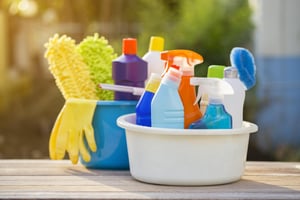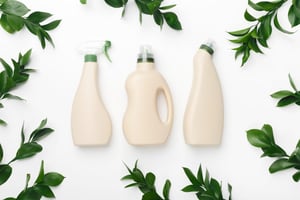The global spread of COVID-19 has caused a surge in the use and consumption of disinfectant...
Packaging Disinfectants to Fight COVID-19
The U.S. Environmental Protection Agency (EPA) continues to identify active ingredients to approve for use in the battle against COVID-19. So far, there are numerous types of active ingredients recognized to be effective against the coronavirus, from powerful oxidizers to natural, essential oils.
It is critical to consider the choice of packaging of the selected active ingredient, along with the formulation variables, such as active ingredient concentration, solvent or carrier liquid, fragrance, colorants and other additives. Ordinary plastics can absorb active ingredients, greatly reducing product efficacy, while other actives can attack the packaging, not only being consumed in the process, but severely limiting the useful life of the package itself. Even water-based formulations or formulations with low concentrations of active ingredients often require a high-performance barrier packaging.
Learn more about these active ingredients, and the importance of packaging them correctly, below.
Thymol
Thymol, derived from the oil of various herbs, including basil and thyme, is a natural, anti-microbial botanical. Because this plant-based component breaks down quickly, it's less harmful to the environment than other chemical cleaners. Plus, the botanical oil kills germs and bacteria without strong chemicals or the harsh smell of bleach.
However, because of its molecular composition, thymol is readily absorbed by conventional plastic packaging. The effective concentration of thymol in a product formulation can be very low (often less than 0.5%), so ensuring it remains active in the formulation–and not scavenged by the plastic container–is critical to maintaining product quality and integrity.
Chlorine dioxide
Chlorine dioxide, CIO2, is one of the latest active ingredients to be approved by the U.S. EPA as an effective disinfectant against COVID-19. Chlorine dioxide is often employed at very low concentrations in water-based formulations (often as low as parts per million).
However, chlorine dioxide’s powerful oxidizing character makes it challenging to package in plastic. Chlorine dioxide attacks the plastic, causing stress cracking through oxidation. In order to protect the product integrity and durability, chlorine dioxide requires an effective barrier layer.
Another issue is that plastic packaging can neutralize chlorine dioxide, reducing the effectiveness of disinfectants. The antioxidants in plastics, which provide durability against impacts from UV light and moisture, can react with chlorine dioxide and reduce the product’s shelf life and efficacy.
As these active ingredients have been approved by the U.S. EPA, we have seen a surge in commercialized hygiene products to fight COVID-19. Active ingredients, such as thymol and chlorine dioxide, require a high-performance barrier packaging to reduce ingredient scavenging, maintain their effectiveness, increase shelf life and more.
Enkase™ ensures maximum protection for a wide range of formulations, including the life-critical formulations used in the battle against COVID-19. It offers a fully recyclable alternative to conventional barrier packaging, using one of the most environmentally responsible processes available: zero process emissions, zero process waste and zero water. It enables up to 50% dematerialization compared to alternative barrier packaging technologies.


